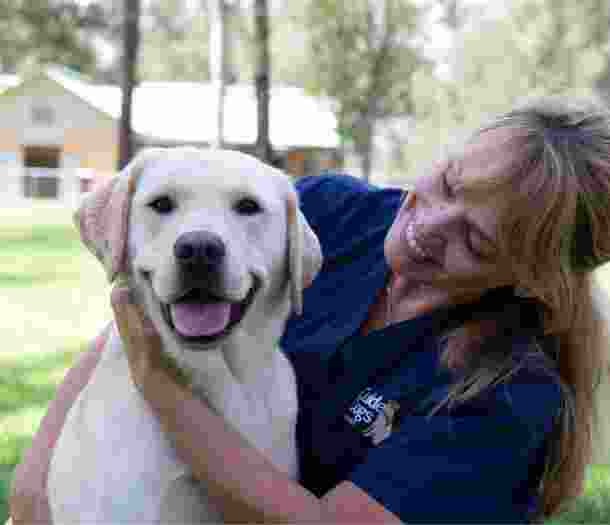Diet and feeding
Growing puppies need a carefully managed diet.
- Water must be available for your puppy at all times. Provide a bowl to drink from in the home and out in the yard. Place the water bowl under cover so the water doesn’t get warm.
- Don’t over feed your puppy. Excess weight places too much pressure on dogs’ hips and elbow joints. This can then lead to health problems later down the track.
- Ask the breeder or previous owner what diet your puppy has been on. It is important to keep your puppy on this diet as their tummies are very sensitive to change.
- Ask your local vet about the best diet for your puppy. If your vet advises that a more nutrient enriched diet is required, a slow transition to the new food is vital.
- We recommend feeding dogs separately to avoid any arguments. The puppy must learn to sit and wait for the food until given the ‘OK’ signal.
- Never give your puppy cooked bones of any kind. Dental bones and raw bones are fine in moderation as they will quickly increase the weight of your puppy.
Handling your puppy
Handle your puppy gently and calmly.
- Rough handling often excites puppies and this can lead to behavioural issues that can be hard to manage when they are older.
- If you want your puppy to respond in a relaxed manner, make slow movements followed by a calm voice.
- Always supervise interaction of puppies with children.
- Do not allow children to pick up or carry puppies. Sitting on the floor is the best way to create a positive relationship between a child and a puppy.
Sleeping requirements
Comfortable sleeping is important.
- Provide your puppy with comfortable bedding and an area to sleep in away from draughts.
- Train your pup to stay in a particular area at night. Initially your puppy may whine. It is important not to immediately go up to your pup when it does this. If you do, the puppy will learn that if it cries you will go and comfort it. This whimpering should not last too long. The first few nights are often the hardest, but do not give in! It will be worth it when you have a puppy that is happy resting in the sleeping area.
Grooming and health checks
It is important to regularly groom your puppy and perform health checks to:
- Ensure your puppy is in perfect health
- Ensure your puppy is used to and comfortable being handled
- Teach your puppy to remain still during grooming and health checks
Daily grooming and health checks should include:
- Brushing the coat of your puppy in the direction of the natural growth of hair
- Checking that your puppy’s eyes are clear and free of discharge
- Looking inside your puppy’s mouth to check for broken teeth or any abnormalities including gum irritations
- Searching your puppy for ticks and fleas as well as rashes, bumps and wounds
- Checking your puppy’s ears for redness, dirt, discharge or smell
- Look at your puppy’s paws for any abnormalities including cuts, redness, broken nails, or nails that need clipping

Identifying common health issues
Common causes for a visit to the vet.
If your dog displays any of these signs, do not hesitate to call your vet:
- Ears showing signs of discharge or redness
- Shaking or scratching the ears or the rest of the body
- Chewing of feet
- Lameness
- Redness or discharge of the eyes
- Vomiting or diarrhoea
- Wounds/scratches or hot spots.


